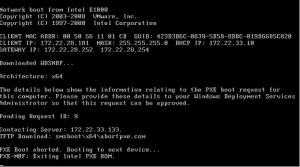How to Enable Secure Boot: A Step-by-Step Guide


How to Enable Secure Boot: A Step-by-Step Guide


Introduction
Secure Boot is a security feature found in modern computer systems that helps protect against unauthorized firmware and operating system code from running during the boot process. By enabling Secure Boot, you can enhance the security of your computer and mitigate the risk of malware or unauthorized modifications. In this comprehensive guide, we will walk you through the detailed steps to enable Secure Boot on your computer.
What is Secure Boot?
Secure Boot is a feature designed to ensure that only digitally signed and trusted software is allowed to run during the boot process of a computer. It verifies the integrity and authenticity of firmware, bootloader, and operating system components, preventing the execution of unauthorized or malicious code. Secure Boot relies on cryptographic signatures to validate the authenticity of the software before allowing it to load.
Step-by-Step Guide to Enable Secure Boot
Follow the step-by-step instructions below to enable Secure Boot on your computer:
Step 1: Access the UEFI/BIOS Settings
Restart your computer and access the UEFI/BIOS settings. The process may vary depending on the manufacturer and model of your computer. Typically, you need to press a specific key (such as F2, Delete, or Esc) during the boot process to enter the UEFI/BIOS setup.
Once you’re in the UEFI/BIOS setup, navigate to the “Security” or “Boot” section. The location and naming of the options may vary depending on your computer’s manufacturer.
Step 2: Understand Compatibility
Before enabling Secure Boot, it’s important to understand the compatibility requirements. Secure Boot relies on trusted hardware, firmware, and operating system components. Ensure that your computer’s hardware and firmware support Secure Boot. Additionally, verify that your operating system is compatible with Secure Boot and has the necessary digital signatures.
Step 3: Enable Secure Boot
In the UEFI/BIOS setup, locate the “Secure Boot” option. Set it to “Enabled” or “On”. Some UEFI/BIOS interfaces might have additional options to configure the Secure Boot mode, such as “Standard” or “Custom”. Choose the appropriate mode based on your preferences and requirements.
It’s worth noting that enabling Secure Boot may prevent the system from booting if any installed software or drivers are not digitally signed or if there are compatibility issues. Ensure that all software and drivers installed on your system are from trusted sources and have the necessary digital signatures.
Step 4: Set a Secure Boot Password
Consider setting a Secure Boot password. This password helps prevent unauthorized changes to the Secure Boot settings. By setting a password, you add an extra layer of security and ensure that only authorized users can modify the Secure Boot configuration.
Choose a strong and unique password, and remember to keep it in a secure place. If you forget the Secure Boot password, you may need to perform additional steps, such as resetting the UEFI/BIOS settings, to regain access.
Step 5: Save and Exit
Save the changes you made to the UEFI/BIOS settings and exit the setup. Usually, you can do this by selecting the “Save and Exit” or similar option. Confirm any prompts to save the changes before exiting.
Important Tips for Enabling Secure Boot
1. Compatibility Check
Before enabling Secure Boot, ensure that your computer’s hardware, firmware, and operating system support this feature. Incompatible components may cause issues or prevent your system from booting properly.
2. Secure Boot Password
Consider setting a Secure Boot password to prevent unauthorized changes to the Secure Boot settings. This adds an extra layer of security and ensures that only authorized users can modify the Secure Boot configuration.
3. Secure Boot Keys
Familiarize yourself with the concept of Secure Boot keys. Secure Boot uses digital keys to verify the authenticity of software components. Understanding how these keys work can help you troubleshoot any issues related to Secure Boot.
4. Secure Boot and Dual Boot Systems
If you have a dual boot system with multiple operating systems, enabling Secure Boot may require additional configuration. Ensure that all operating systems and bootloaders are compatible with Secure Boot and have the necessary digital signatures.
5. Regular Software Updates
Keep your firmware, operating system, and software up to date to ensure that you have the latest security patches and protection against emerging threats. Regular updates help maintain the overall security of your system.
Conclusion
Enabling Secure Boot is an important step in securing your computer against unauthorized code execution during the boot process. By following the detailed step-by-step guide and considering the important tips provided in this article, you can enable Secure Boot and enhance the overall security of your system.
Remember to regularly update your firmware, operating system, and software to ensure that you have the latest security patches and protection against emerging threats.








